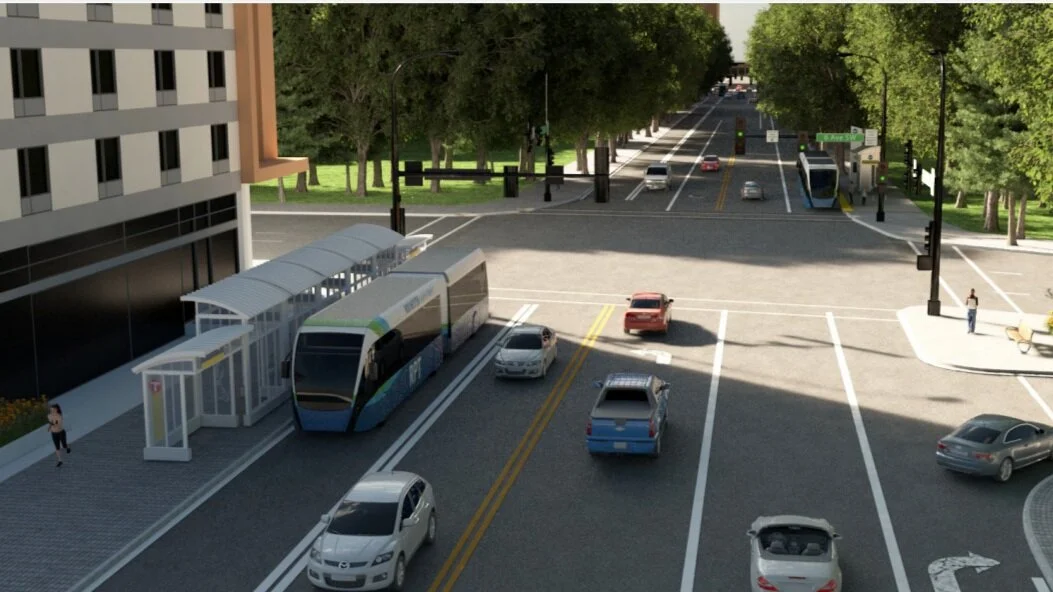Could Rochester develop its own 'warehouse district'?
The City of Rochester is laying the groundwork on a multi-phase development plan that promises to transform 60 acres of mostly-vacant riverfront property into a vibrant urban neighborhood.
The first draft of the plan, now months in the making, was presented on Wednesday to the city’s Planning and Zoning Commission, which voted 7-1 to recommend the proposal to the Rochester City Council.
“Long-term, I think this is a phenomenal project and a vision for another one of our gateways into downtown,” said Commissioner Ben Kall.
Known as the Downtown Waterfront Southeast Small Area Plan, the project would encompass land extending north to south from Fourth Street SE to 9 1/2 Street SE, and east to west from Third Avenue SE to South Broadway Avenue. The area includes the former AMPI and Kmart sites.
According to city planners, the goal is to work with private land owners to create a “warehouse district” concept that would include 1,500 housing units — both affordable and market rate — along with retail, office space, and other amenities. While much of the concrete site would need to be redeveloped, some structures — notably the AMPI building — could potentially be repurposed, according to plans presented Wednesday.
Outline of the Downtown Waterfront Southeast Small Area Plan
In pitching the project, city planners and consultants also emphasized the importance of connecting the site to the river. Renderings show a new promenade along the river, though officials acknowledged those plans would depend on the long-term status of the current railroad line.
Pat Regan, one of the owners of Camegaran LLC, which purchased the AMPI and Kmart sites for a combined $10.7 million, said access to the riverfront was a big part of what sparked his interest in the land.
“Our attraction to this site is greatly enhanced by the fact that we are next to the Zumbro River, and our vision is to activate and get next to the river with our people who live here and people who come here,” said Regan.
Regan also emphasized to the commission that his family views the riverfront vision as a “generational project,” adding that they are prepared to “be here for the long haul.” City planners estimate the project, which would be broken up into stages, could take at least two decades to complete.
Among the first steps to be taken, according to the city, will likely be to build a bridge connecting Sixth Street with the AMPI site. Officials believe the bridge could serve as a catalyst for the plan to start to take form.
“If we can get the Sixth Street bridge in, it’s going to release the ability to develop the western part of the AMPI site, get one of the First Avenue segments in, begin to provide some impetus and support for activating the riverfront, the promenade, a number of different investment opportunities that key on this significant access from Broadway into the site itself,” said Michael Lamb, a consultant on the project.
In forming the plan, city officials highlighted their work in holding workshops and forums with property owners and the adjacent Sunnyside and Slatterly Park neighborhoods. Ryan Yetzer, interim deputy director of community development, said the result has been a “design not dropping out of the sky,” but one that “is a progression” based on feedback.
Bird’s eye view of the proposed redevelopment site
At this point, there are no estimates on cost, including what kind of public investment would be needed to take the drawings from paper to reality. Any plan, however, would require a mix of funding sources — from Destination Medical Center funds, to federal dollars, and private investment.
Still, despite concerns from Commissioner Thomas Hill about the long-term costs of the plan, city officials noted that a commission approval did not equate to an authorization of funding; instead, it was meant as an endorsement of a long-term vision of the riverfront property.
“This is about a plan,” Cynthia Steinhauser, director of community development, told the commission. “You are not obligating dollars, supporting tax levy increases… you are not doing any of that. What you are doing is setting the stage for development to occur.”
Sean Baker is a Rochester journalist and the founder of Med City Beat.
Rendering courtesy the City of Rochester










